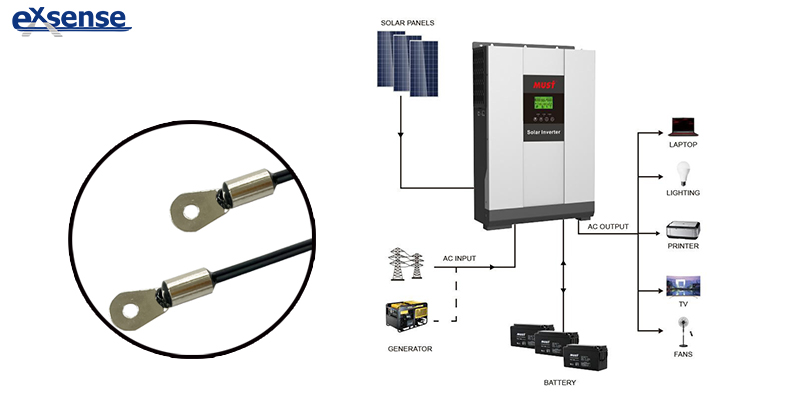The Neural Hub of Home Energy Storage Thermal Management Systems: NTC Temperature Sensors
Industry Status:
Amid the global energy transition and rapid renewable energy development, the demand for home energy storage systems is surging. Against this backdrop, these systems are fundamentally reshaping modern lifestyles. This technology provides households with stable and reliable power, enhancing clean energy utilization and sustainability.
I.Working Principles and Technical Analysis of Home Energy Storage
- Operating Principles:Solar panels convert sunlight into electricity through the photoelectric effect of semiconductor materials, storing energy in battery modules (storage units) to supply continuous green power for households. For daily consumption, the control system employs inverters to convert DC power into 220V/50Hz AC power via bidirectional DC/AC converters, meeting the load requirements of household appliances.
- Technical Analysis:As a highly integrated innovative energy management platform, home energy storage systems comprise three core components: the Battery Management System (BMS), battery monitoring module, and bidirectional inverter. These work synergistically to enable efficient energy storage and flexible dispatch.
- BMS: Serving as the “neural hub” of the storage module, it consists of a central controller, battery monitoring unit, energy management module, communication module, and user interface. Collectively, they enable intelligent lifecycle monitoring of batteries.
- Battery Monitoring Module: Includes voltage sensors, current sensors, and NTC temperature sensorsfor multidimensional data tracking (voltage, current, and temperature). NTC sensors are deployed via direct contact on battery surfaces or critical internal nodes, transmitting digital signals to the central controller to support precise thermal management.
- Bidirectional Inverter: Acting as the “transmission bridge” between the storage system and external circuits enables AC/DC bidirectional conversion. During charging, it converts external power (grid or PV) to DC for battery storage; during discharge, it inverts DC to stable 220V/110V AC for household use.
Ⅱ.Thermal Management in Home Energy Storage: The Role of NTC Temperature Sensors
Thermal control is critical for battery performance and system safety, and it is achieved through NTC temperature sensors, enabling comprehensive temperature regulation. Storage units consist of multiple battery packs, with liquid cooling and air cooling being the primary thermal management methods:
- Liquid Cooling: The controller activates cooling mode when NTC sensors detect overheating in battery packs/inverters. Coolant circulates through the inverter and battery enclosure, absorbing heat to enhance uniform dissipation and ensure stable operation.
- Air Cooling: Fans draw external air into the chamber to cool inverters and batteries. Rising temperatures trigger increased fan speed, boosting airflow and heat exchange efficiency.
These systems operate synergistically: air cooling handles low loads independently, while both collaborate under high loads. This hybrid approach limits temperature fluctuations to ±0.3°C, extending battery lifespan by over 40%.
Conclusion:
As the “thermal guardian” of home energy storage, NTC temperature sensors enable intelligent monitoring by collecting real-time temperature data from battery packs and inverters. This facilitates efficient energy storage, charging/discharging, and power conversion management, seamlessly integrating clean energy with safe electricity use to redefine future home energy ecosystems.














